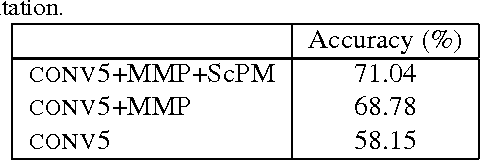Viet-Anh Nguyen
Three Minds, One Legend: Jailbreak Large Reasoning Model with Adaptive Stacked Ciphers
May 22, 2025Abstract:Recently, Large Reasoning Models (LRMs) have demonstrated superior logical capabilities compared to traditional Large Language Models (LLMs), gaining significant attention. Despite their impressive performance, the potential for stronger reasoning abilities to introduce more severe security vulnerabilities remains largely underexplored. Existing jailbreak methods often struggle to balance effectiveness with robustness against adaptive safety mechanisms. In this work, we propose SEAL, a novel jailbreak attack that targets LRMs through an adaptive encryption pipeline designed to override their reasoning processes and evade potential adaptive alignment. Specifically, SEAL introduces a stacked encryption approach that combines multiple ciphers to overwhelm the models reasoning capabilities, effectively bypassing built-in safety mechanisms. To further prevent LRMs from developing countermeasures, we incorporate two dynamic strategies - random and adaptive - that adjust the cipher length, order, and combination. Extensive experiments on real-world reasoning models, including DeepSeek-R1, Claude Sonnet, and OpenAI GPT-o4, validate the effectiveness of our approach. Notably, SEAL achieves an attack success rate of 80.8% on GPT o4-mini, outperforming state-of-the-art baselines by a significant margin of 27.2%. Warning: This paper contains examples of inappropriate, offensive, and harmful content.
Enhancing Multimodal Entity Linking with Jaccard Distance-based Conditional Contrastive Learning and Contextual Visual Augmentation
Jan 24, 2025Abstract:Previous research on multimodal entity linking (MEL) has primarily employed contrastive learning as the primary objective. However, using the rest of the batch as negative samples without careful consideration, these studies risk leveraging easy features and potentially overlook essential details that make entities unique. In this work, we propose JD-CCL (Jaccard Distance-based Conditional Contrastive Learning), a novel approach designed to enhance the ability to match multimodal entity linking models. JD-CCL leverages meta-information to select negative samples with similar attributes, making the linking task more challenging and robust. Additionally, to address the limitations caused by the variations within the visual modality among mentions and entities, we introduce a novel method, CVaCPT (Contextual Visual-aid Controllable Patch Transform). It enhances visual representations by incorporating multi-view synthetic images and contextual textual representations to scale and shift patch representations. Experimental results on benchmark MEL datasets demonstrate the strong effectiveness of our approach.
Improving performance of real-time full-band blind packet-loss concealment with predictive network
Nov 10, 2022Abstract:Packet loss concealment (PLC) is a tool for enhancing speech degradation caused by poor network conditions or underflow/overflow in audio processing pipelines. We propose a real-time recurrent method that leverages previous outputs to mitigate artefact of lost packets without the prior knowledge of loss mask. The proposed full-band recurrent network (FRN) model operates at 48 kHz, which is suitable for high-quality telecommunication applications. Experiment results highlight the superiority of FRN over an offline non-causal baseline and a top performer in a recent PLC challenge.
TUNet: A Block-online Bandwidth Extension Model based on Transformers and Self-supervised Pretraining
Oct 26, 2021



Abstract:We introduce a block-online variant of the temporal feature-wise linear modulation (TFiLM) model to achieve bandwidth extension. The proposed architecture simplifies the UNet backbone of the TFiLM to reduce inference time and employs an efficient transformer at the bottleneck to alleviate performance degradation. We also utilize self-supervised pretraining and data augmentation to enhance the quality of bandwidth extended signals and reduce the sensitivity with respect to downsampling methods. Experiment results on the VCTK dataset show that the proposed method outperforms several recent baselines in terms of spectral distance and source-to-distortion ratio. Pretraining and filter augmentation also help stabilize and enhance the overall performance.
Weakly Supervised Fine-Grained Image Categorization
Apr 20, 2015



Abstract:In this paper, we categorize fine-grained images without using any object / part annotation neither in the training nor in the testing stage, a step towards making it suitable for deployments. Fine-grained image categorization aims to classify objects with subtle distinctions. Most existing works heavily rely on object / part detectors to build the correspondence between object parts by using object or object part annotations inside training images. The need for expensive object annotations prevents the wide usage of these methods. Instead, we propose to select useful parts from multi-scale part proposals in objects, and use them to compute a global image representation for categorization. This is specially designed for the annotation-free fine-grained categorization task, because useful parts have shown to play an important role in existing annotation-dependent works but accurate part detectors can be hardly acquired. With the proposed image representation, we can further detect and visualize the key (most discriminative) parts in objects of different classes. In the experiment, the proposed annotation-free method achieves better accuracy than that of state-of-the-art annotation-free and most existing annotation-dependent methods on two challenging datasets, which shows that it is not always necessary to use accurate object / part annotations in fine-grained image categorization.
 Add to Chrome
Add to Chrome Add to Firefox
Add to Firefox Add to Edge
Add to Edge